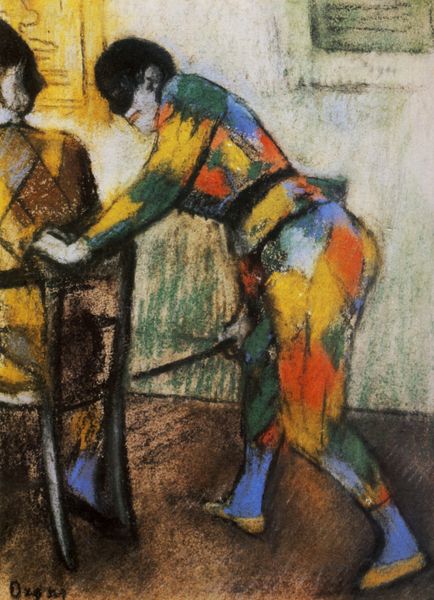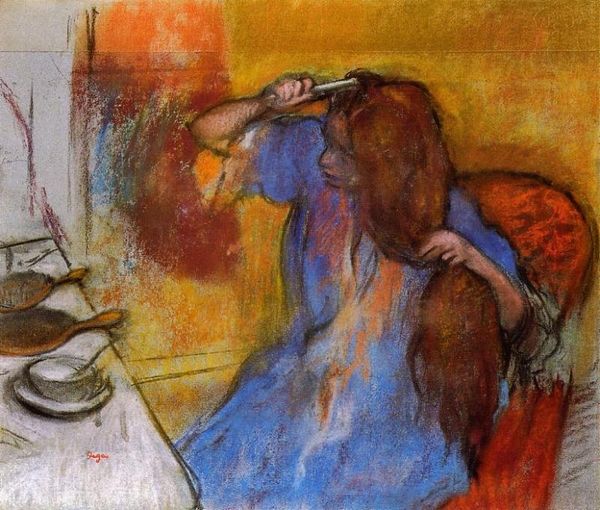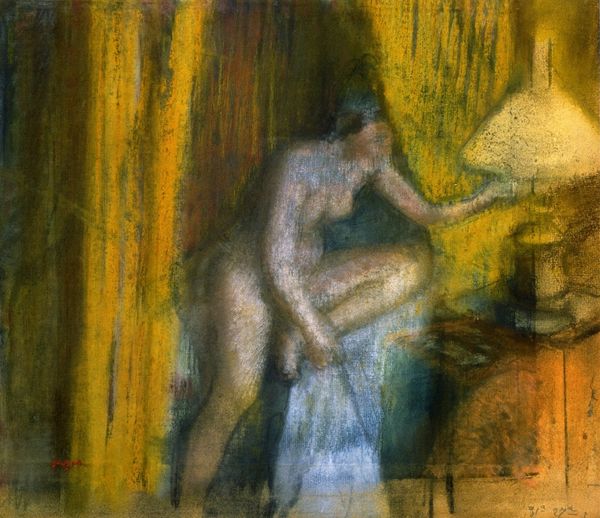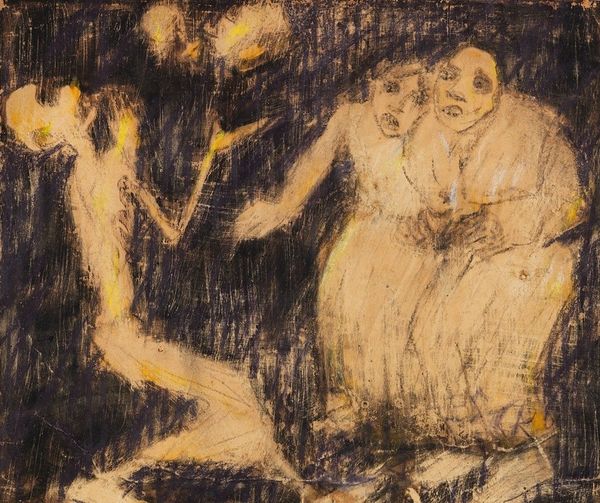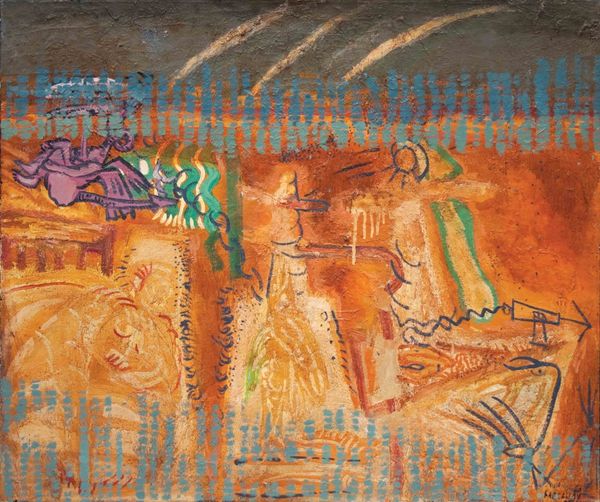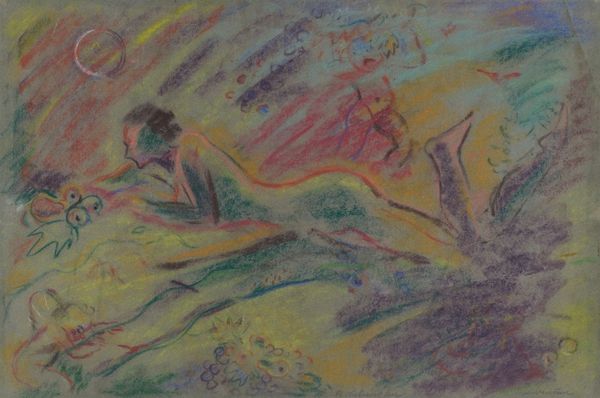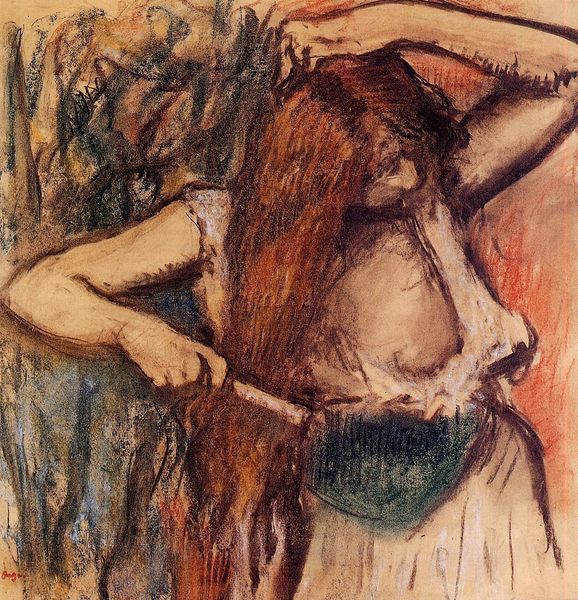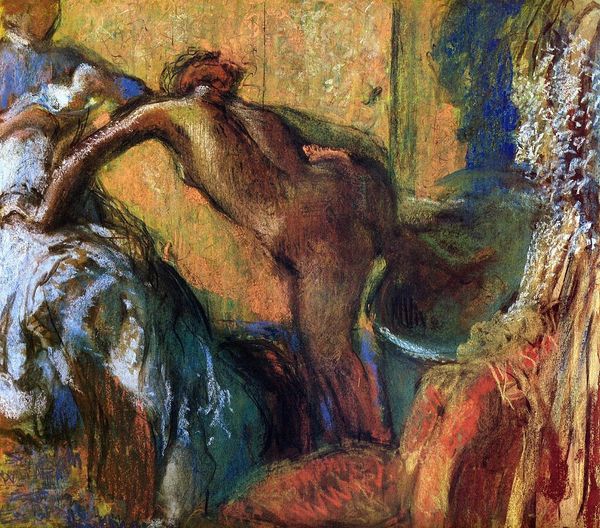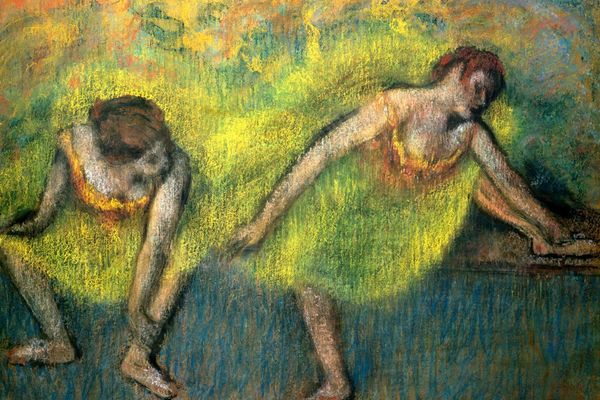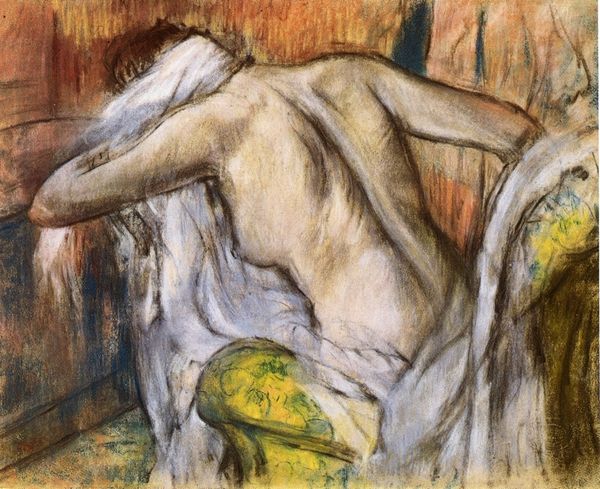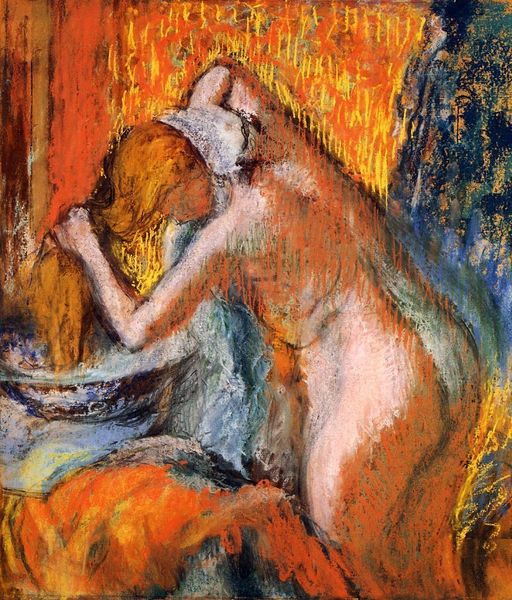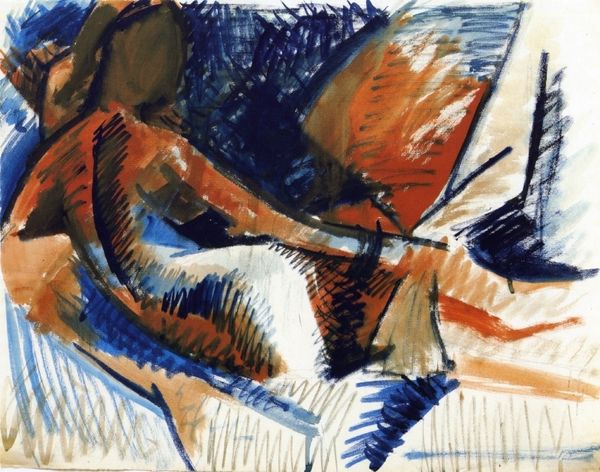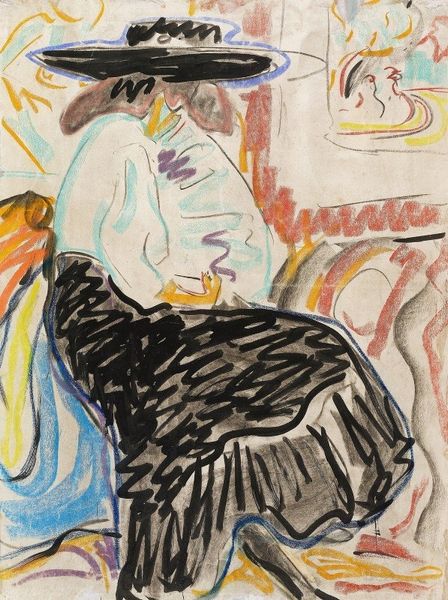
drawing, pastel
#
portrait
#
drawing
#
impressionism
#
figuration
#
oil painting
#
france
#
human
#
genre-painting
#
pastel
Copyright: Public domain
Editor: This is "Dancers in a Box," a pastel drawing created by Edgar Degas around 1884. It’s part of the collection at the Kelvingrove Art Gallery and Museum in Glasgow. I'm immediately struck by the somewhat claustrophobic composition. The women seem almost trapped within the frame. How do you interpret this work, particularly focusing on the artist's choices of color and line? Curator: The tension you observe is rooted, I suggest, within Degas’ compositional approach, which sacrifices representational clarity in favor of expressive form. Notice how the flattened picture plane, with its abrupt cropping, negates traditional depth cues. Color, applied in layered strokes, serves to build form but simultaneously undermines it, as seen in the red fabric. What do you make of how this disjunctive style shapes our understanding of the scene? Editor: I see what you mean about the flattening effect. The abrupt angles and close cropping do make the scene feel less like a real space and more like an arrangement of shapes and colors. The layering of pastels definitely adds texture but also contributes to the slightly unresolved feeling of the piece. Does that have something to do with the influence of Impressionism? Curator: In part, but we might want to refine this thought. Degas, though exhibited with the Impressionists, rejected their emphasis on fleeting light. Rather, he employed a similar visual language to probe questions of perception and representation itself. Note how he captures a sense of momentary, suspended action and consider how the seemingly random arrangement contributes to an image charged with both artificiality and reality. What, then, does this tension convey to you? Editor: I suppose it suggests that the artist wasn't so interested in faithfully depicting dancers, but rather in experimenting with form and the act of seeing itself. I guess I see it now as less about 'real' dancers than about shapes and compositional problems! Curator: Precisely. We see in Degas a complex dance between representation and abstraction. The drawing prompts us to look not only at the depicted figures but at the inherent structure of image making. Editor: Thanks, it's been helpful to see this drawing through the lens of its formal qualities. It is so much more than what I saw initially.
Comments
No comments
Be the first to comment and join the conversation on the ultimate creative platform.
